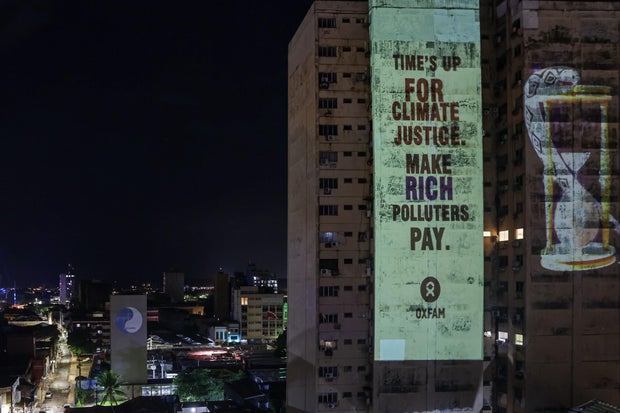In Belém, the bustling Brazilian gateway to the Amazon rainforest, leaders from nearly 200 nations have gathered for the United Nations’ 30th Climate Change Conference, known as COP30, to chart difficult next steps in the global fight against climate change. But the absence of the leaders from the world’s three largest greenhouse gas emitters — China, the United States and India — cast a shadow over the summit as it kicked off.
Beijing and New Delhi did dispatch senior-level delegations for the two-week summit. The White House, however, said no high-level U.S. officials would attend this year’s COP. President Trump has repeatedly dismissed human-caused climate change as “a hoax.”
Two Democratic governors, California’s Gavin Newsom and New Mexico’s Michelle Lujan Grisham, were in Brazil to attend the summit, representing state-level U.S. efforts to curb emissions.
“What the hell is going on here?” Newsom asked at a global investors’ summit in São Paulo on Monday, where he fired off a characteristic criticism of the Trump administration. “We’re in Brazil — one of our great trading partners, one of the world’s great democracies. Home to all the rare earth metals we need. This is the country we should be engaging with, not slapping with 50% tariffs.”
MAURO PIMENTEL/AFP/Getty
Ten years ago, 195 nations taking part in the COP21 summit signed onto the landmark Paris Agreement, intended to commit individual nations to take measures that, collectively, would limit the rise in average global temperatures to “well below” 2 degrees Celsius (3.6 degrees Fahrenheit). The objective in the agreement, which the Obama administration signed, was to pursue efforts to cap the global temperature increase at 1.5°C (2.7°F) above pre-industrial levels.
That target now appears out of reach.
Based on national plans submitted this year, the planet is on course to warm by roughly 2.5°C (4.5°F) during this century. The Earth’s average surface temperature in 2024 was the hottest since record keeping began in 1880 — and the last 10 years have all ranked among the warmest ever observed.
Still, U.N. Climate Change Executive Secretary Simon Stiell told delegates in Brazil this week that after three decades of dedicated talks, “we are now bending the curve of planet heating emissions downwards — for the very first time.”
“I am not sugarcoating it,” Stiell hastened to add. “We have so much more work to do.”
A new U.N. analysis released this week shows that, if current national commitments are met, global emissions should fall by about 12% by 2035 compared to 2019 levels. That’s an improvement from last month’s projection of 10%, but still far short of the 60% reduction scientists say would be needed to keep warming within the Paris Agreement’s 1.5°C goal.
U.N. Secretary-General António Guterres has been pressing for stronger action, warning that surpassing the 1.5°C limit now looks almost inevitable and slamming it as both a “moral failure” and “deadly negligence” putting the lives of billions of people at risk.
Allison Sales/picture alliance/Getty
Despite low expectations for any sweeping breakthroughs, the delegations at COP30 are broadly expected to update national commitments to curb emissions in the next decade.
A Brazil-led initiative to raise $125 billion for rainforest protection, coupled with renewed scrutiny of fossil fuel companies — which Guterres accused of “holding back change” while collecting record profits and government subsidies — were also expected to come out of the two-week gathering.
There is also likely to be more pressure applied on the governments of wealthy nations to help finance climate adaptations around the world, to help developing countries mitigate the impacts of a warming planet.
At last year’s COP29 in Baku, Azerbaijan, countries agreed on an aspirational goal of mobilizing $1.3 trillion annually by 2035, with at least $300 billion expected to come from developing economies.
Publicly available data on how much climate finance has actually been delivered since then, however, remains scarce, and that could be a key point of contention for the negotiators gathered in Belém to discuss.

